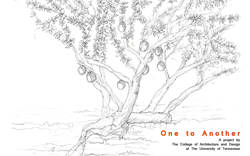Visiting Haiti: Changing Perceptions
 Wednesday, February 29, 2012 at 5:43PM
Wednesday, February 29, 2012 at 5:43PM I believe that we each had our own expectations for what Haiti would be like, and yet each of us were equally amazed when we arrived. It is so cliché to say that you have to experience something yourself to fully understand it, but it is so true. I thought I was prepared to see the poverty, trash, and prejudice, and in a sense I was, but it still does not take away from the shock of experiencing it for ones self. Experiencing Haiti helped us better understand their way of life and current living traditions and assisted us in defining some key issues that our design must meet.
Before heading to Haiti we were told about the local impulse to gather in the shade. I thought that because of our habit to seek the sun we might enjoy meeting in the sunshine. In all actuality, after hiking the mountainous, dry terrain our group was hot and tired. We all crowded under porches and tree canopies to cool off as much as possible. Experiencing this first hand has given us the understanding of the importance of designing plenty of shaded areas: porches, pavilions, and tree covered zones.
Another key issue to consider is the need for passive ventilation. The traditional houses use vent blocks in the walls to allow breezes to pass through the interior. Since there will not be any air conditioning this is a necessity. Whether our design accommodates CMU walls and vent blocks or openings in the roof for a stack effect, the ventilation issue needs to be a major priority.

While we were in Haiti we were constantly running out of water. When we ran our of drinking water, someone would have to go all the way to the spring, fill our cooler, and bring it back to the house for us to fill our water bottles. When we ran out of grey water we would have to wait to flush the toilets until absolutely necessary. This was a new experience for most of us, because we have never had to go without or ration water. We are just so blessed in our state of living. So, something that will be considered in the design of this community is a more convenient and available water system. We believe that each structure should have rain water collection, and a well with a hand pump should be made available for when the generator is not working properly.
These issues were brought to our attention through a first hand experience in Haiti. Perhaps that will help engrain the importance of these matters. We would not want to live in a condition without shade, natural ventilation, and easy access to water, so why would we design that for someone else?







Reader Comments